Futamata Castle
-Ending place of tragic prince-
Overview
Alias:
Place: Futamata-cho, Tenryu-ku Hamamatsu city, Shizuoka
Location: 34.86224690386537, 137.8081779295443
Type: Hill castle
Built: Originally in 1503, expanded after 1560's
Remaining remnants: Stone walls, clay walls and dry moats
Title:
Futamata castle (二俣城) is placed on a long and narrow hill at a curving point of Tenryugawa river. Formerly current Futamatagawa river merged into Tenryugawa river just at the south of Futamata castle, thus surrounded its three directions by rivers Futamata castle was a natural secure fortress.
Futamata is a place Tenryu river flow from mountainous area into Enshu plain, and on the way from Hamamatsu to Ina region (southern Nagano prefecture) and way to Oigawa river. Due to above conditions, Futamata castle became the target of struggle in Sengoku era.
At the beginning of 16th century, this area was goverend by Imagawa clan, a warlord of Suruga province(middle part of Shizuoka prefecture). Futamata castle was originally built by a general of Imagawa clan on 1503, and lately managed by Matsui clan.
Type: Hill castle
Built: Originally in 1503, expanded after 1560's
Remaining remnants: Stone walls, clay walls and dry moats
Title:
Brief History
Futamata is a place Tenryu river flow from mountainous area into Enshu plain, and on the way from Hamamatsu to Ina region (southern Nagano prefecture) and way to Oigawa river. Due to above conditions, Futamata castle became the target of struggle in Sengoku era.
From Imagawa clan to Tokugawa clan
At the beginning of 16th century, this area was goverend by Imagawa clan, a warlord of Suruga province(middle part of Shizuoka prefecture). Futamata castle was originally built by a general of Imagawa clan on 1503, and lately managed by Matsui clan.
In 1560, Yoshimoto Imagawa (1519-1560), leader of Imagawa clan, was defeated and killed at the battle of Okehazama against Nobunaga Oda (1534-1582), and Munenobu Matsui (1515-1560), commander of this castle also died at the battle.
Several years later weakened Imagawa clan was attacked by both of former ally Shingen Takeda (1521-1573) and former subordinate Ieyasu Tokugawa (1543-1616). Ieyasu advanced into Enshu (west Shizuoka prefecture) in 1569, and occupied both Hamamatsu castle and Futamata Castle. As a front for northbound, Ieyasu expanded Futamata castle.
Three year later, Shingen Takeda attempted further expansion into Totomi province and attacked Tokugawa clan. On 1572 winter, Futamata castle was besieged by Takeda army and firmly stand over one month, but Takeda army broke water scooping house from Tenryu river by striking rafts, thus Tokugawa commander opened the castle owing to lack of water.
Several years later weakened Imagawa clan was attacked by both of former ally Shingen Takeda (1521-1573) and former subordinate Ieyasu Tokugawa (1543-1616). Ieyasu advanced into Enshu (west Shizuoka prefecture) in 1569, and occupied both Hamamatsu castle and Futamata Castle. As a front for northbound, Ieyasu expanded Futamata castle.
Fierce battle between Tokugawa clan and Takeda clan
Three year later, Shingen Takeda attempted further expansion into Totomi province and attacked Tokugawa clan. On 1572 winter, Futamata castle was besieged by Takeda army and firmly stand over one month, but Takeda army broke water scooping house from Tenryu river by striking rafts, thus Tokugawa commander opened the castle owing to lack of water.
After the occupation Takeda army marched southward and beat Tokugawa army at the battle of Mikatagahara, but due to the sudden death of Shingen next year, Takeda army fully retreated to Kai province. Next several years Katsuyori Takeda (1546-1582), successor of Shingen, and Ieyasu kept fighting at Totomi province and Mikawa province.
But in 1575, Katsuyori was seriously defeated by alliance of Oda and Tokugawa army at the battle of Nagashino, and lost many general and soldiers. After the battle Ieyasu started counterattack to Takeda clan, and siege Futamata castle still occupied by Takeda clan. This time Nobushige Yoda (1548-1583), the commander of Takeda clan stand for six months, but due to no support from their nation Nobushige finally opened the castle at the end of this year.
In 1579, Nobuyasu Tokugawa (1559-1579), an eldest son of Ieyasu and a commander of Okazaki castle (Aichi prefecture), was suddenly moved to this castle and forced to suicide by a suspect of connection with Takeda clan. His mother (of course the wife of Ieyasu) Tsukiyamadono was also killed at the same time.
The precise reason was unclear, but following reasons are said such as a) Tsukiyamadono was originally a person of Imagawa clan, which was former master but extinguished by Tokugawa clan. Tsukiyamadono had malice on this fact and actually connected with Takeda clan, b) Nobunaga Oda (1534-1582), the stronger ally of Ieyasu, concerned talent of Nobuyasu and forced Ieyasu to kill hill, as Nobuyasu might be the fear for Nobutada Oda (1557-1582), the son and successor of Nobunaga in the future, or c) there was an internal conflict in Tokugawa clan between Okazaki group and Hamamatsu group, and Nobuyasu was involved in that.
In 1590, Tokugawa clan was transferred to Kanto region by Toyotomi government after Odawara campaign, and this castle was managed by Yoshiharu Horio (1542-1611), a general of Toyotomi clan, along with Hamamatsu castle.
Ending place of Ieyasu's eldest son
In 1579, Nobuyasu Tokugawa (1559-1579), an eldest son of Ieyasu and a commander of Okazaki castle (Aichi prefecture), was suddenly moved to this castle and forced to suicide by a suspect of connection with Takeda clan. His mother (of course the wife of Ieyasu) Tsukiyamadono was also killed at the same time.
The precise reason was unclear, but following reasons are said such as a) Tsukiyamadono was originally a person of Imagawa clan, which was former master but extinguished by Tokugawa clan. Tsukiyamadono had malice on this fact and actually connected with Takeda clan, b) Nobunaga Oda (1534-1582), the stronger ally of Ieyasu, concerned talent of Nobuyasu and forced Ieyasu to kill hill, as Nobuyasu might be the fear for Nobutada Oda (1557-1582), the son and successor of Nobunaga in the future, or c) there was an internal conflict in Tokugawa clan between Okazaki group and Hamamatsu group, and Nobuyasu was involved in that.
Afterward of Futamata castle
In 1590, Tokugawa clan was transferred to Kanto region by Toyotomi government after Odawara campaign, and this castle was managed by Yoshiharu Horio (1542-1611), a general of Toyotomi clan, along with Hamamatsu castle.
Yoshiharu reformed this castle into a modern one equipped stone walls and built main tower as a major branch castle of the territory, but subsequent to his movement to Izumo province (Shimane prefecture) in 1600 this castle ceased to be in operation. Now ruins consist of both medieval and modern element well remain on the hill.
The central area of Tobayama castle is located at the top of the mountain, and a 100 meter square space surrounded by stone walls. The front gate of central area is a Masugata (composite gate) guarded by large stones, and a broad path of 6 meter width from hillside area is connected to front gate.
Hamamatsu Castle -Castle of promotion-
Okazaki Castle- Hardship history of young Ieyasu Tokugawa-
Tobayama castle
At the next hill of Futamata castle, there is another castle named Tobayama castle (鳥羽山城). Originally Tobayama castle was built as a military base to siege Futamata castle by Tokugawa clan, but later it was expanded as a residential castle by Horio clan, as Futamata castle had only limited space to build a large residence.The central area of Tobayama castle is located at the top of the mountain, and a 100 meter square space surrounded by stone walls. The front gate of central area is a Masugata (composite gate) guarded by large stones, and a broad path of 6 meter width from hillside area is connected to front gate.
Even though separated by former Futamatagawa river, Futamata castle and Tobayama castle were operated unitedly. Half broken stone walls is seen at central area, and other than central area many terraces exist all over the hill.
15 minutes walk from Tenryu Hamanako Tetsudo line Futamata-Honmachi station. 20 minutes drive from Shintomei Expressway Hamamatsu-Hamakita interchange.
Access
15 minutes walk from Tenryu Hamanako Tetsudo line Futamata-Honmachi station. 20 minutes drive from Shintomei Expressway Hamamatsu-Hamakita interchange.
Related Castles
Hamamatsu Castle -Castle of promotion-
Okazaki Castle- Hardship history of young Ieyasu Tokugawa-
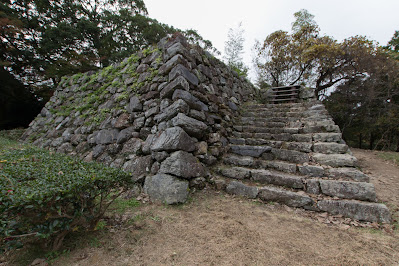












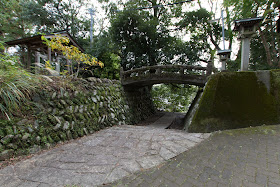
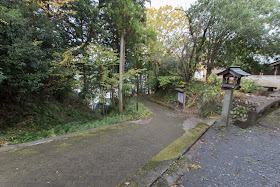



















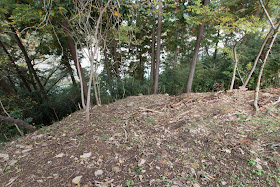




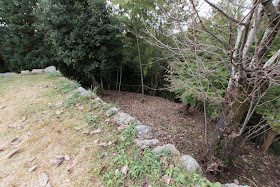


















































































































































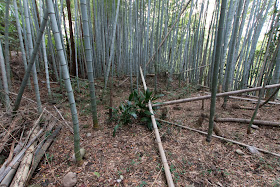























































































































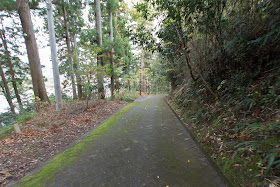









































































































































































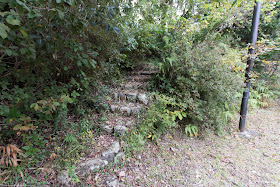







































No comments:
Post a Comment